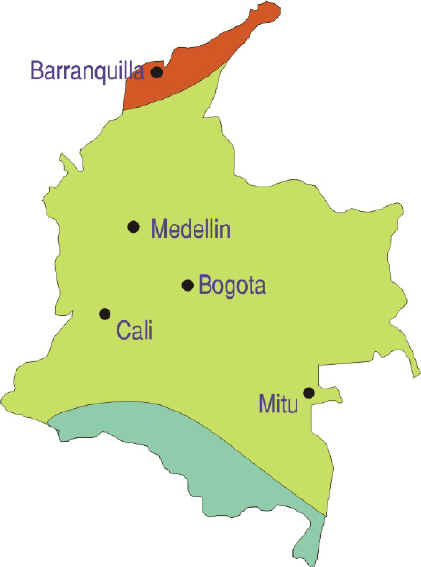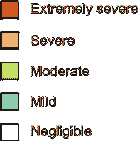
 |
The following map of the atmospheric corrosivity measured in Colombia was adapted from "Atmospheric Corrosion of Copper in Ibero-America" by M. Morcillo, E. Almeida, M. Marrocos, and B. Rosales, Corrosion, Vol. 57, No. 11, pages 967-980.


Colombia's climate varies from tropical to temperate, resulting in a diverse environmental system. As well, Colombia is a highly populous country, with up to a quarter of the entire population living in urban centers. This concentration of people in cities results in a collection of urban-oriented environmental problems, the most significant of which is air pollution.
In non-urban areas, coffee production, mining activities, clearing of land for cattle grazing, all contribute to deforestation and the concomitant problem of soil erosion. In the Choco region of Colombia, there are marked threats to bio-diversity, specifically of wildlife and plant species. The exploitation of forests for timber, as well as the prevalence of cocaine trafficking further intensifies these issues.
Because of its high altitude, Bogota experiences terrible air pollution problems. The Commons reported that 70 percent of the city's air pollution problems stem from automobiles. Although only a small number of people own automobiles in the city, traffic is so congested that it can take over an hour to travel five miles.
Other regions and countries: Argentina, Brazil, Canada, Central America, Chile, China, Colombia, Cuba, France, Germany, India, Italy, Japan, Mexico, New Zealand, North America, Portugal, Russia, Saudi Arabia, South Africa, Spain, Sweden, UK, USA, Venezuela
 |
 |